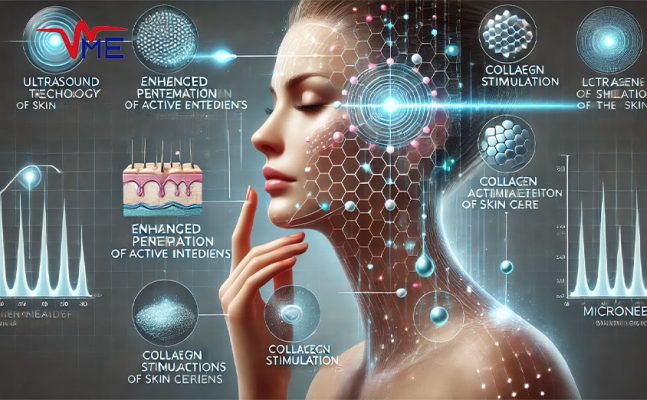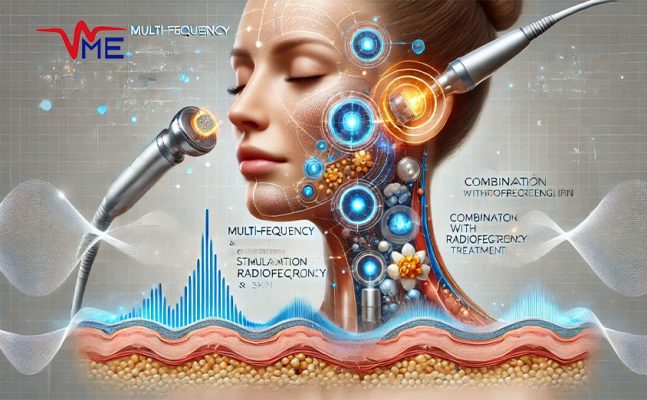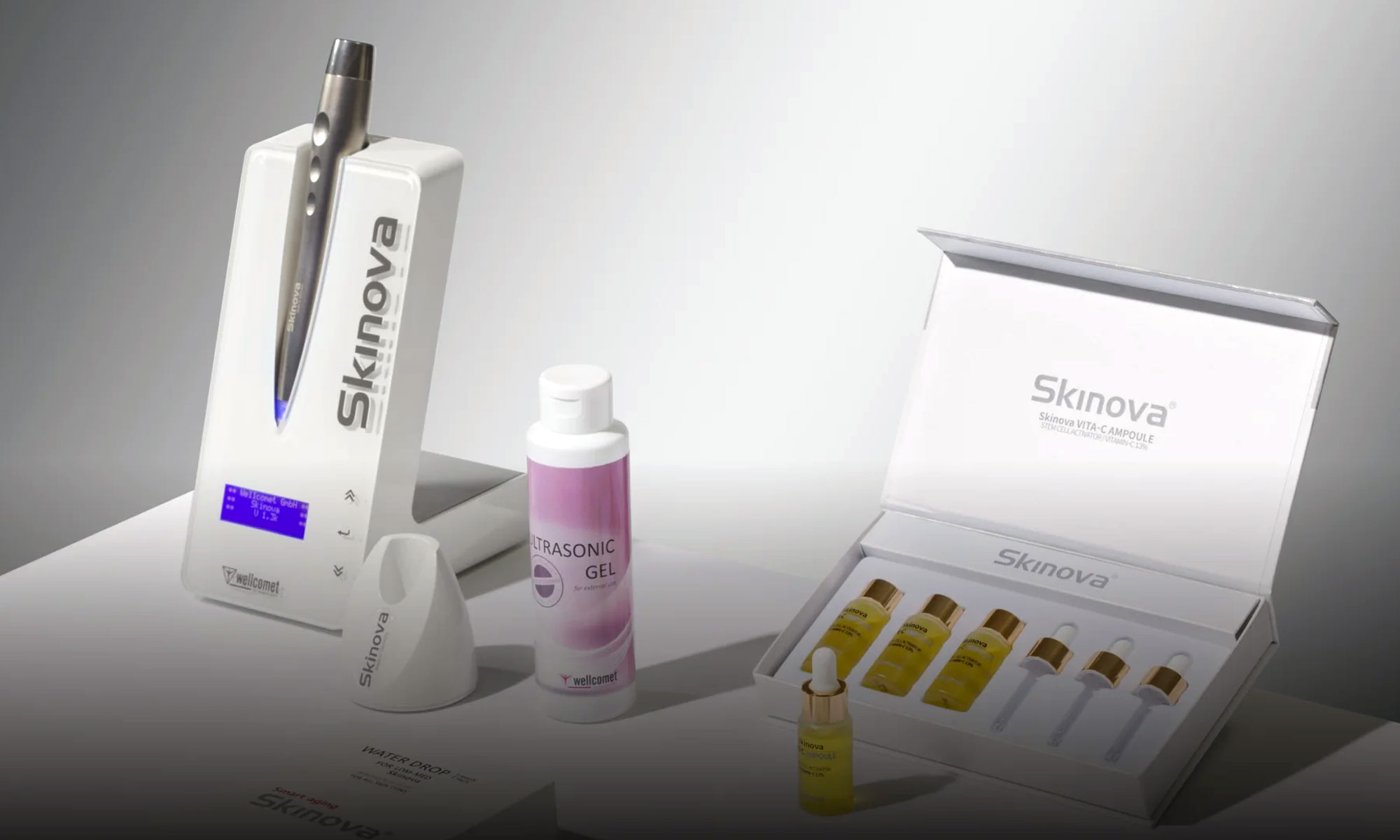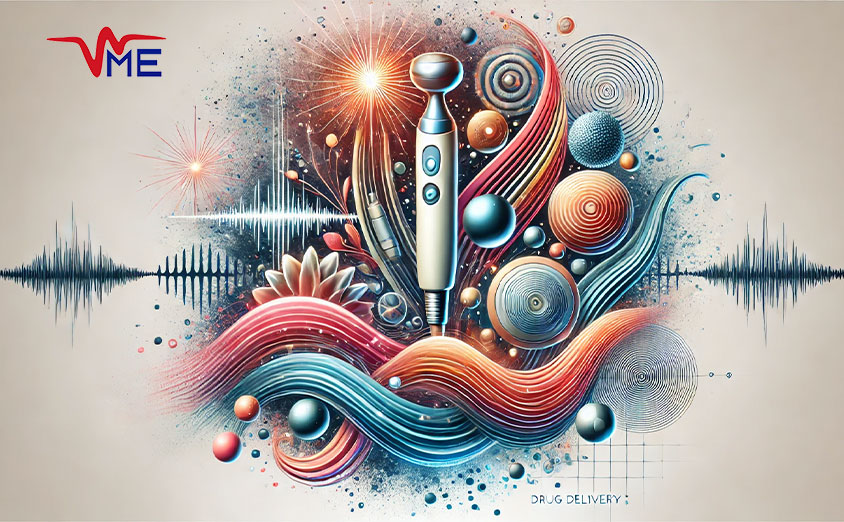LDM Triple
The Science of Ultrasound in Modern Dermatological Equipment
Ultrasound technology has emerged as a revolutionary tool in modern dermatology, offering non-invasive solutions to address a variety of skin concerns. By utilizing high-frequency sound waves, ultrasound treatments can enhance skin tightening, rejuvenation, and the absorption of active ingredients, while also stimulating collagen production. The use of ultrasound in dermatology not only promotes a youthful appearance but also provides an effective approach for deeper skin therapy without causing discomfort or downtime.
As dermatological equipment evolves, advanced methods such as LDM Triple integrate the benefits of ultrasound with multi-frequency capabilities, further optimizing skin healing and rejuvenation processes. This article delves into the science behind ultrasound technology, its applications, benefits, and the future of its use in skin care.
How Ultrasound is Used in Skin Treatments
In dermatology, ultrasound technology is applied through high-frequency sound waves that penetrate the skin’s surface. These sound waves create micro-vibrations in the tissues, promoting blood circulation and cellular activity. The main uses of ultrasound in skin treatments include tightening sagging skin, enhancing the penetration of topical treatments, and aiding in scar and cellulite reduction.
Ultrasound therapy’s versatility makes it suitable for various skin types and conditions, whether for anti-aging treatments, reducing skin inflammation, or improving skin texture. It can also be combined with other non-invasive treatments, such as radiofrequency, to achieve more comprehensive results.
Evolution of Ultrasound in Dermatological Applications
The evolution of ultrasound technology in dermatology has shifted from its initial use in medical diagnostics to advanced skin treatments. Initially, ultrasound was used to detect conditions like cysts or monitor blood flow. Over time, its therapeutic properties for skin care became evident, leading to the development of modern ultrasound devices specifically designed for aesthetic purposes.
Today, ultrasound-based dermatological equipment includes features like multi-frequency capabilities and energy modulation, allowing practitioners to customize treatments for individual patient needs. These innovations have significantly expanded the scope of ultrasound applications in dermatology.

How Ultrasound Works in Dermatological Equipment
Ultrasound technology in dermatology functions by emitting sound waves at varying frequencies, which can target different skin depths. The choice between high-frequency and low-frequency ultrasound depends on the specific treatment goals.
High-Frequency vs. Low-Frequency Ultrasound
- High-Frequency Ultrasound: Typically used for superficial treatments, high-frequency ultrasound targets the epidermis and upper dermis. It is effective for fine lines, wrinkles, and enhancing the absorption of topical products.
- Low-Frequency Ultrasound: Penetrates deeper into the skin and is used for treatments such as collagen stimulation, fat reduction, and improving blood flow. Low-frequency ultrasound is ideal for skin tightening and deeper skin rejuvenation.
Mechanisms of Ultrasound for Skin Rejuvenation
Ultrasound technology rejuvenates the skin by generating heat in the deeper layers of the dermis, stimulating collagen and elastin production. The heat created by ultrasound waves helps tighten existing collagen fibers and encourages the growth of new, healthy collagen. This process results in smoother, firmer skin over time, providing natural-looking anti-aging effects.
Ultrasound also enhances cell metabolism and nutrient delivery, further supporting the skin’s ability to repair and regenerate. This makes it an effective option for treating conditions like scars, hyperpigmentation, and loose skin.
Applications of Ultrasound in Dermatology
Ultrasound technology has versatile applications in dermatology, providing solutions for various skin concerns with minimal invasiveness.
Skin Tightening and Lifting
One of the most common uses of ultrasound in dermatology is for skin tightening and lifting. By delivering focused ultrasound energy to the deeper layers of the skin, it promotes collagen contraction and regeneration. This non-surgical facelift alternative is popular among patients seeking firmer skin on the face, neck, and body without the risks associated with invasive procedures.

Ultrasound-Assisted Drug Delivery
Ultrasound can enhance the delivery of active ingredients into the skin by increasing the permeability of the epidermis. Known as sonophoresis, this technique helps topical treatments penetrate deeper into the skin layers, making them more effective. It is used in various therapeutic and cosmetic treatments, such as anti-aging serums, acne medications, and hydrating masks.
Treatment of Scars and Cellulite
Ultrasound treatments are also used for scar reduction and cellulite treatment. The sound waves help break down fibrous tissues and stimulate circulation, reducing the appearance of scars and smoothing the texture of cellulite-affected areas. The thermal effects further support the regeneration of healthy skin tissue, resulting in a more even and smoother appearance.
Benefits of Using Ultrasound in Dermatological Treatments
Ultrasound technology offers multiple benefits, making it an essential tool in modern dermatology.
Non-Invasive and Safe Procedure
Ultrasound treatments are non-invasive and carry minimal risks. Patients experience little to no discomfort during the procedure, and there is no need for anesthesia or lengthy recovery periods. This makes it a suitable choice for individuals who prefer non-surgical skin care solutions.
Enhanced Penetration for Skin Therapies
By using ultrasound to increase the skin’s permeability, treatments can achieve better absorption of active ingredients, such as hyaluronic acid, peptides, and vitamins. This enhanced penetration ensures that skin therapies are more effective, delivering results more quickly than topical applications alone.
Stimulating Collagen Production
The ability of ultrasound to stimulate collagen production helps maintain skin elasticity and firmness. Regular treatments can slow the effects of aging by keeping the skin looking youthful and resilient.
Comparing Ultrasound Technology with Other Dermatological Methods
When evaluating ultrasound technology, it’s important to consider how it compares to other popular skin treatment options.
Laser Treatments vs. Ultrasound
While both laser treatments and ultrasound target skin rejuvenation, lasers often involve ablative techniques that can cause redness, peeling, and downtime. In contrast, ultrasound is non-invasive and safer for darker skin tones, as it poses a lower risk of hyperpigmentation.
Microneedling vs. Ultrasound
Microneedling creates micro-injuries to stimulate collagen, whereas ultrasound uses sound waves to achieve similar effects without physically piercing the skin. For patients seeking a gentler approach to skin rejuvenation, ultrasound may be the preferred choice.

Innovations in Ultrasound-Based Dermatological Equipment
The field of ultrasound technology in dermatology continues to advance, offering more refined treatments and improved patient experiences.
Multi-Frequency Ultrasound Devices
Modern dermatological equipment often features multi-frequency ultrasound devices, which allow practitioners to adjust the frequency based on the specific needs of the patient. This flexibility enhances the treatment’s effectiveness by addressing multiple skin layers in one session.
Combined Ultrasound and Radiofrequency Treatments
Combining ultrasound with radiofrequency (RF) technology has led to more comprehensive skin treatments. The thermal effects of RF, when paired with ultrasound, offer enhanced skin tightening and fat reduction capabilities, making it a powerful combination for non-surgical body contouring and facial rejuvenation.
The Impact of Ultrasound on Modern Skin Care
Ultrasound technology has fundamentally transformed the approach to skin care in modern dermatology, offering non-invasive solutions that effectively treat various skin conditions. The integration of advanced methods like LDM Triple further refines these treatments, providing multi-frequency capabilities that support optimal skin healing and rejuvenation.
As the industry continues to innovate, ultrasound-based treatments will likely play an even greater role in dermatology, helping patients achieve their skin care goals with minimal discomfort and downtime. For those looking to maintain youthful, healthy skin, the benefits of ultrasound technology, including enhanced collagen production and improved treatment penetration, make it an essential component of any modern aesthetic practice.
In the future, the combination of LDM Triple with other technologies will continue to redefine dermatological standards, setting new benchmarks for safety, efficacy, and patient satisfaction in skin care.




Amazing insights! This article breaks down the science of ultrasound in dermatology so effectively. A must-read for skincare enthusiasts!